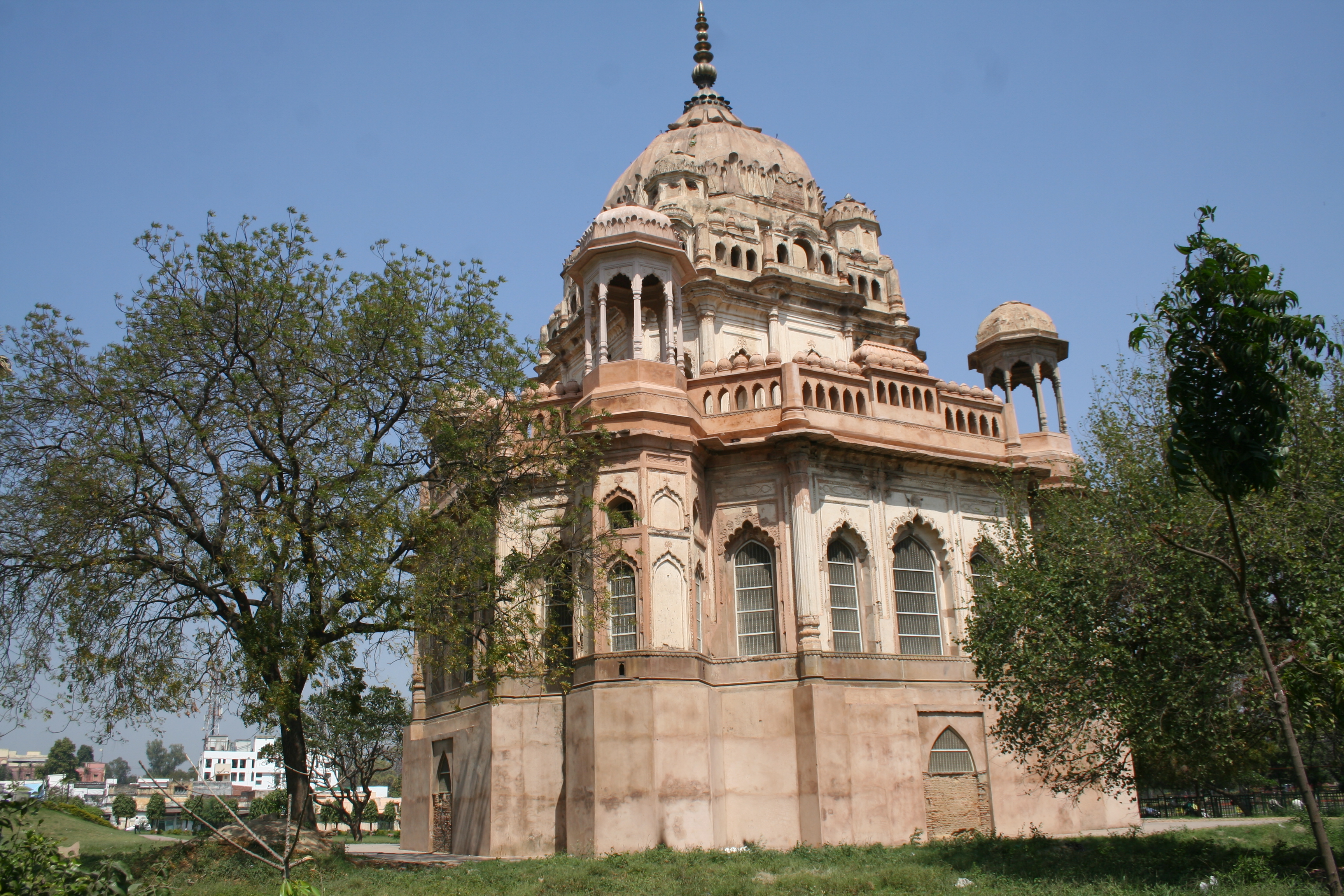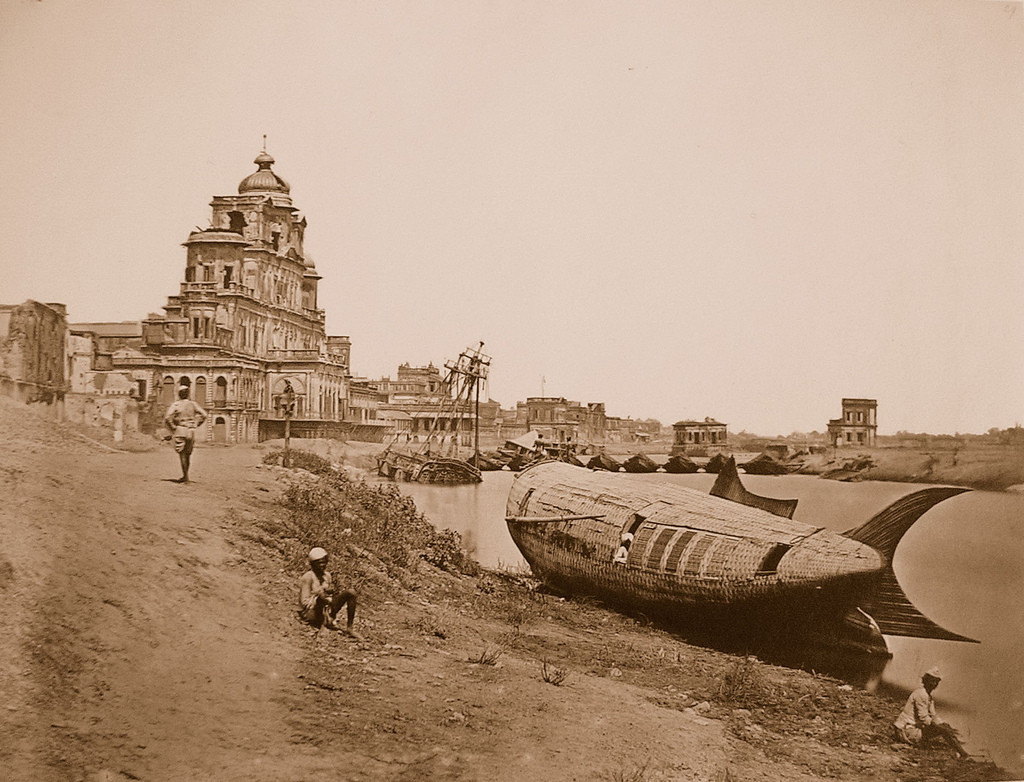Ghazi Ud Din Haider on:
[Wikipedia]
[Google]
[Amazon]
Ghazi-ud-Din Haidar Shah (c. 1769 – 19 October 1827) was the last
 He was the third son of Nawab Saadat Ali Khan and Mushir ZadiAnother city monument in need of attention
He was the third son of Nawab Saadat Ali Khan and Mushir ZadiAnother city monument in need of attention
, Express News Service, 27 August 2007 was his mother. He became ''Nawab Wazir'' of Oudh on 11 July 1814 after the death of his father. In 1816, as a consequence of the

 Several monuments in
Several monuments in
File:Flag of Awadh.svg, Flag of Nawabs of Awadh, introduced during the reign of Ghazi-ud-Din Haidar Shah(1814–1827).
File:अवध मोहर.jpg, Other Seal, introduced during the reign of Ghazi-ud-Din Haidar (1814–1827).
File:Ghazi ud-Din Haidar.jpg, Ghazi ud-Din Haidar, seventh Nawab (1814–27), entertains Lord and Lady Moira to a banquet in his palace Opaque watercolour, 1820–22
File:Sword and Scabbard of Nawab Ghazi-ud-Din Haidar Shah of Awadh.jpg, Scimitar and Scabbard of Nawab Ghazi-ud-Din Haidar Shah of Awadh.
File:Hilt of Ghazi-ud-Din Haidar Shah's sword.jpg, Hilt of Ghazi-ud-Din Haidar Shah's sword.
File:Fish motif on the cross-guard of Ghazi-ud-Din Haidar Shah's sword.jpg, Fish motif on the cross-guard of Ghazi-ud-Din Haidar Shah's sword.
File:Tiger's head at the cross-guard of Ghazi-ud-Din Haidar Shah's sword.jpg, Tiger's head at the quillon of Ghazi-ud-Din Haidar Shah's sword.
File:Tiger's head at the pommel of Ghazi-ud-Din Haidar Shah's sword.jpg, Tiger's head at the pommel of Ghazi-ud-Din Haidar Shah's sword.
National Informatics Centre, Lucknow – Rulers of Awadh
{{DEFAULTSORT:Ghazi-Ud-Din Haidar Shah 1769 births Indian Shia Muslims Nawabs of Awadh 1827 deaths
nawab wazir of Oudh
The Nawab of Awadh or the Nawab of Oudh was the title of the rulers who governed the state of Awadh (anglicised as Oudh) in north India during the 18th and 19th centuries. The Nawabs of Awadh belonged to a dynasty of Persian origin from Nishap ...
from 11 July 1814 to 19 October 1818, and first King of Oudh
The Nawab of Awadh or the Nawab of Oudh was the title of the rulers who governed the state of Awadh (anglicised as Oudh) in north India during the 18th and 19th centuries. The Nawabs of Awadh belonged to a dynasty of Persian origin from Nishap ...
(Oudh State) from 19 October 1818 to 19 October 1827.
Life
 He was the third son of Nawab Saadat Ali Khan and Mushir ZadiAnother city monument in need of attention
He was the third son of Nawab Saadat Ali Khan and Mushir ZadiAnother city monument in need of attention, Express News Service, 27 August 2007 was his mother. He became ''Nawab Wazir'' of Oudh on 11 July 1814 after the death of his father. In 1816, as a consequence of the
Nepal War
The Anglo-Nepalese War (1 November 1814 – 4 March 1816), also known as the Gorkha War, was fought between the Gorkhali army of the Kingdom of Nepal (present-day Nepal) and the British forces of the East India Company (EIC, present-day Indi ...
(in which Ghazi-ud-Din loaned the British 1 Crore Rupees), the East India Company made some territorial readjustments in order to liquidate the loan. They ceded to him the districts of Nawabgunge & Khyreegunge (both taken from Oudh in 1801), along with the Terae lands taken from Nepal, and took Handea (or Kewae).
In 1818, under the influence of the Marquess of Hastings
''The'' () is a grammatical article in English, denoting persons or things already mentioned, under discussion, implied or otherwise presumed familiar to listeners, readers, or speakers. It is the definite article in English. ''The'' is the m ...
, the British Governor of the Presidency of Fort William (Bengal), he declared himself as the independent ''Padshah-i-Awadh'' (King of Oudh). Lord Hastings believed that if Ghazi-ud-din, were made king, he would be a useful counterpoise to the Emperor of Delhi. He accordingly induced him to coin money in his own name, and to assume the title of Shah (King). This was perhaps the most sterile stroke of the sterile science of diplomacy that was ever conceived or executed. The title never took much root out of Lucknow, and though Ghazi-ud-din and his four successors were all titular kings, their rule is far more commonly spoken of by the country folk as the "Nawabi" than as "Shahi".
He died in the ''Farhat Bakhsh'' palace in Lucknow in 1827. He was succeeded by his son Nasir-ud-Din Haider after his death.

Patron of art and culture

 Several monuments in
Several monuments in Lucknow
Lucknow (, ) is the capital and the largest city of the Indian state of Uttar Pradesh and it is also the second largest urban agglomeration in Uttar Pradesh. Lucknow is the administrative headquarters of the eponymous district and division ...
were constructed by Ghazi-ud-Din Haidar. He built the Chattar Manzil
The Chattar Manzil ( ur, , hi, छतर मंज़िल), or Umbrella Palace is a building in Lucknow in Uttar Pradesh which served as a palace for the rulers of Awadh and their wives.
Coordinates:26°85′N 80°93′E
Construction and ...
palace and added the ''Mubarak Manzil'' and the ''Shah Manzil'' in the Moti Mahal complex for better viewing of the animal fights. He also constructed the tombs of his parents, Sadat Ali Khan and Mushir Zadi Begum. For his European wife, he constructed a European style building known as the ''Vilayati Bagh''. Another creation, the '' Shah Najaf Imambara'' (1816), his mausoleum, on the bank of the Gomti
The Gomti, Gumti or Gomati River is a tributary of the Ganges. According to beliefs, the river is the son of Rishi Vashishtha and bathing in the Gomti on Ekadashi (the 11th day of the two lunar phases of the Hindu calendar month) can wash a ...
is a copy of the fourth Caliph Ali
ʿAlī ibn Abī Ṭālib ( ar, عَلِيّ بْن أَبِي طَالِب; 600 – 661 CE) was the last of four Rightly Guided Caliphs to rule Islam (r. 656 – 661) immediately after the death of Muhammad, and he was the first Shia Imam ...
's (R.A) burial place in Najaf
Najaf ( ar, ٱلنَّجَف) or An-Najaf al-Ashraf ( ar, ٱلنَّجَف ٱلْأَشْرَف), also known as Baniqia ( ar, بَانِيقِيَا), is a city in central Iraq about 160 km (100 mi) south of Baghdad. Its estimated popula ...
, Iraq
Iraq,; ku, عێراق, translit=Êraq officially the Republic of Iraq, '; ku, کۆماری عێراق, translit=Komarî Êraq is a country in Western Asia. It is bordered by Turkey to the north, Iran to the east, the Persian Gulf and K ...
. His three wives, Sarfaraz Mahal, Mubarak Mahal and Mumtaz Mahal were also buried here.
Ghazi-ud-Din first appointed a British artist, Robert Home (1752–1834) as his court artist and after his retirement in 1828, he appointed another Briton, George Duncan Beechey
George Duncan Beechey (1798 – 6 December 1852) was an English portrait painter.
Life and career
Beechey was the fourth child of two painters, Sir William Beechey and his second wife, Anne Jessop.John Wilson, ‘Beechey, Sir William (1753–1 ...
(1798–1852) as his court artist. In 1815, Raja Ratan Singh (1782–1851), a noted astronomer, poet and scholar of Arabic, Persian, Turkish, Sanskrit and English joined his court. Because of his initiative, a royal litho printing press in Lucknow was set up in 1821 and the ''Haft Qulzum'', a dictionary and grammar of the Persian language in two volumes was published from this press in the same year.
Coins of Ghazi-ud-Din
After declaring himself as King, Ghazi-ud-Din Haidar Shah issued coins on his name instead of the Mughal emperor, Shah Alam II from AH 1234 (1818). His coins were completely different from his predecessors. The most important feature of his coinage was the introduction of his coat of arms on the reverse of coin, consisting of two fish facing each other, two tigers each holding a pennon for support and a ''Katar'' (a small dagger) surmounted by a crown symbolizing the king.Gupta P.L. (1969, reprint 2000). Coins, New Delhi: National Book Trust, , pp. 178–9Gallery
Notes
References
External links
National Informatics Centre, Lucknow – Rulers of Awadh
{{DEFAULTSORT:Ghazi-Ud-Din Haidar Shah 1769 births Indian Shia Muslims Nawabs of Awadh 1827 deaths